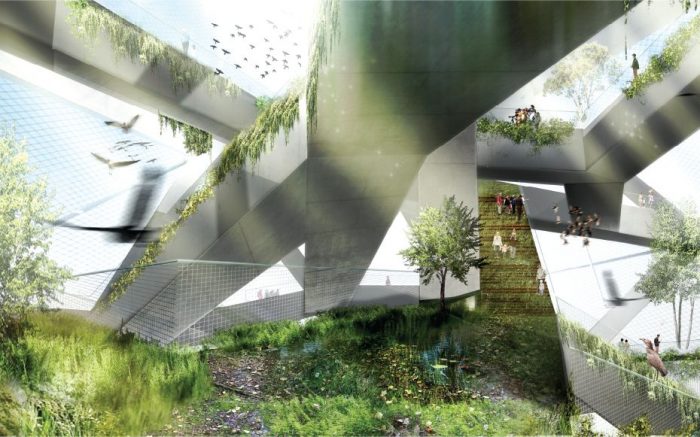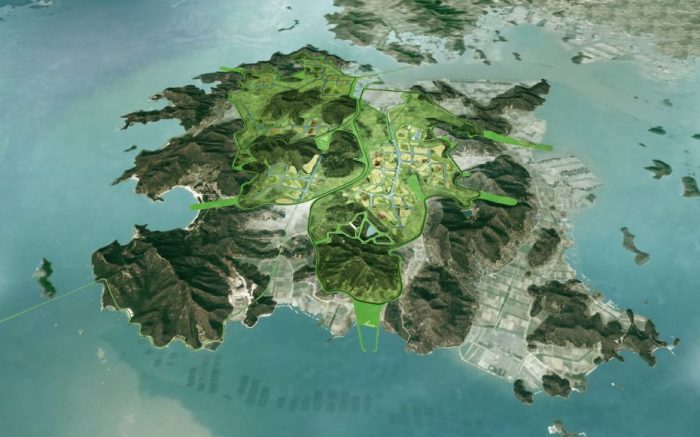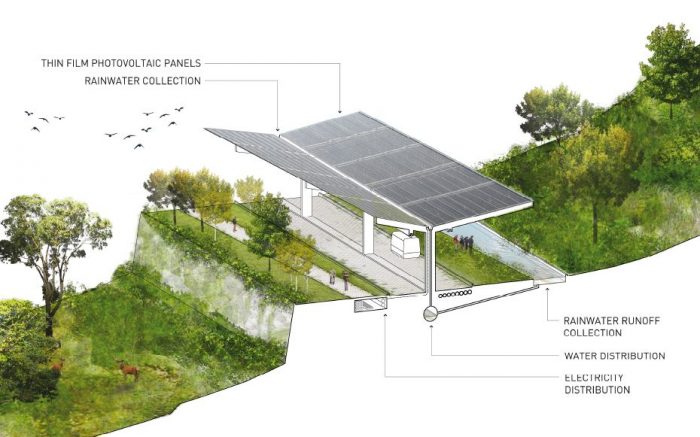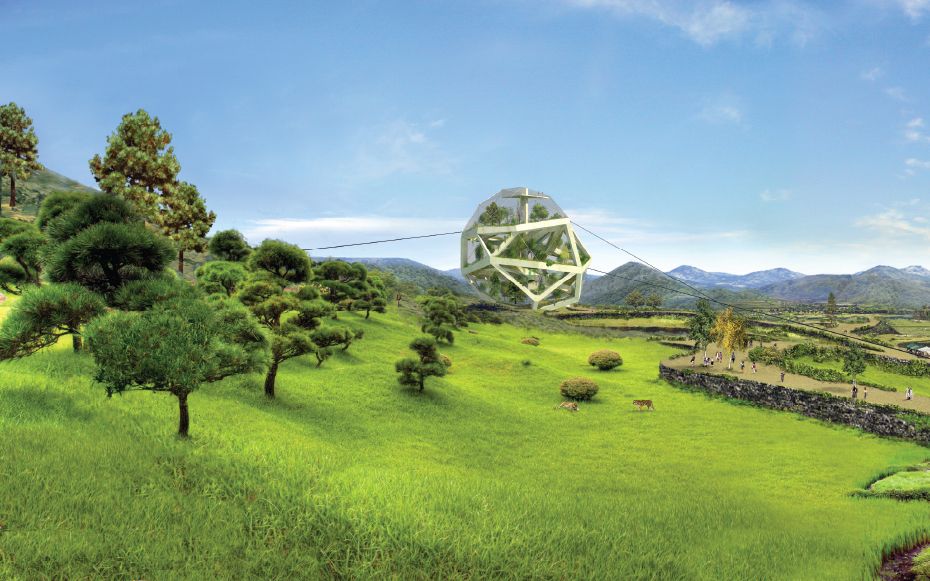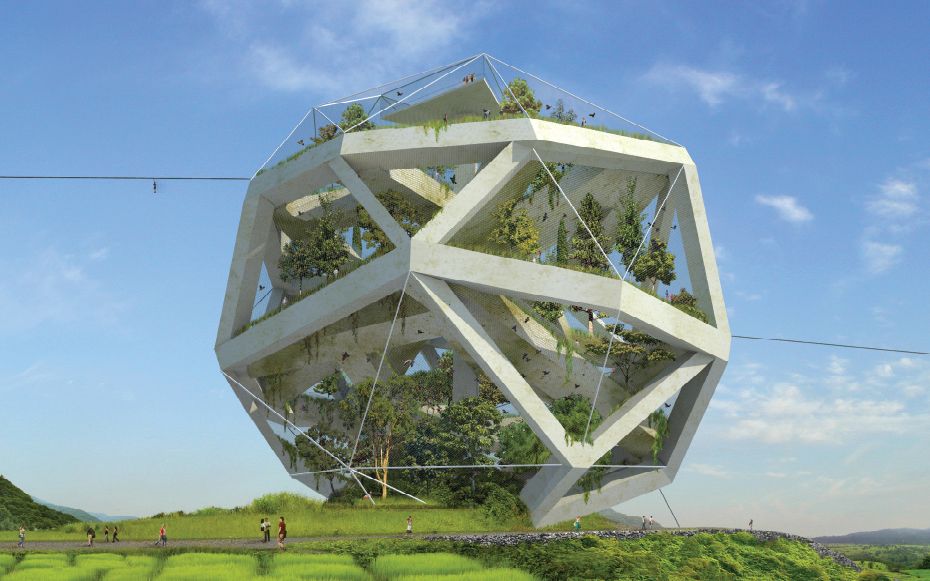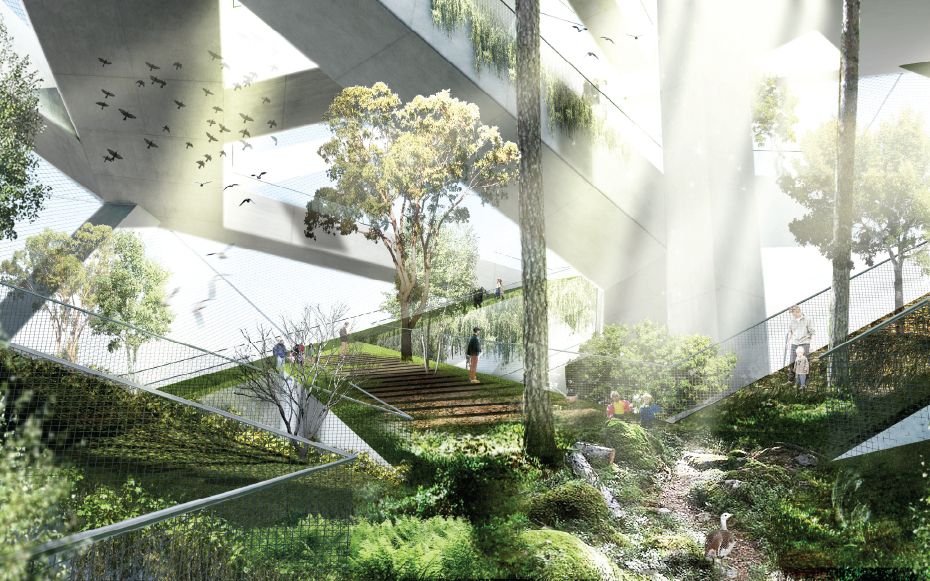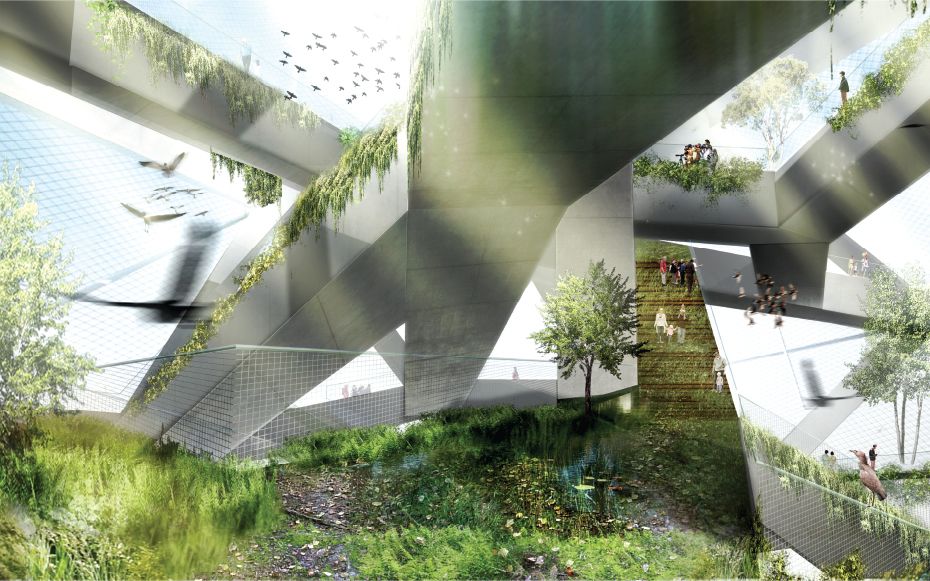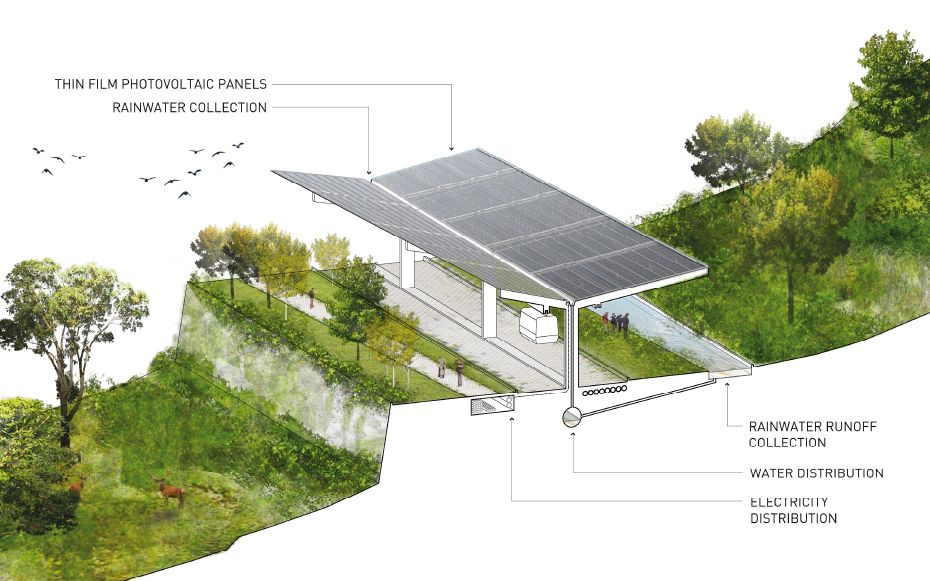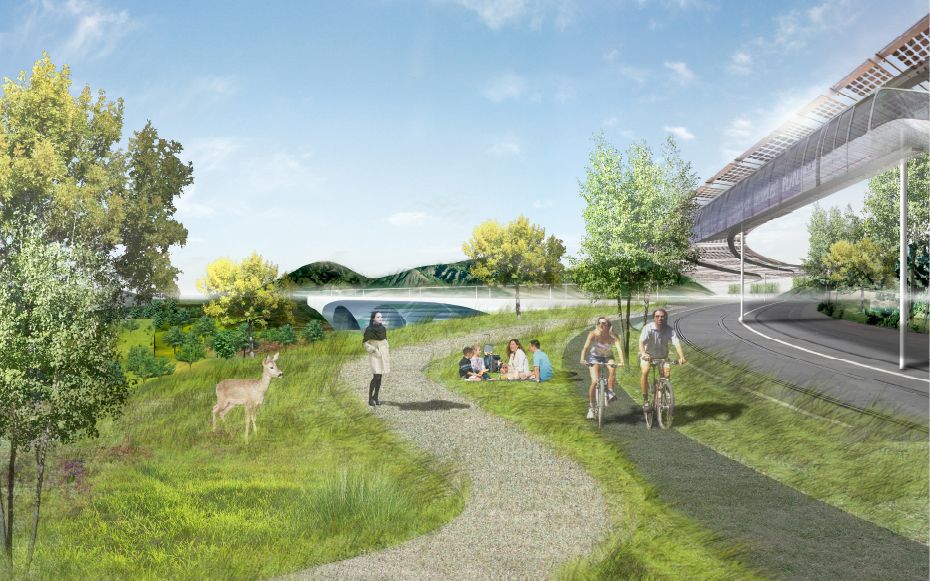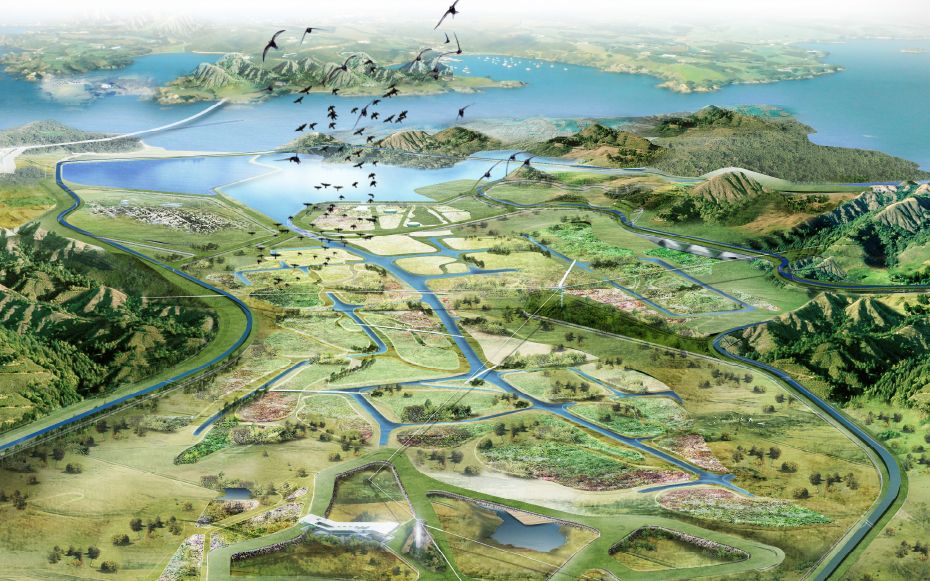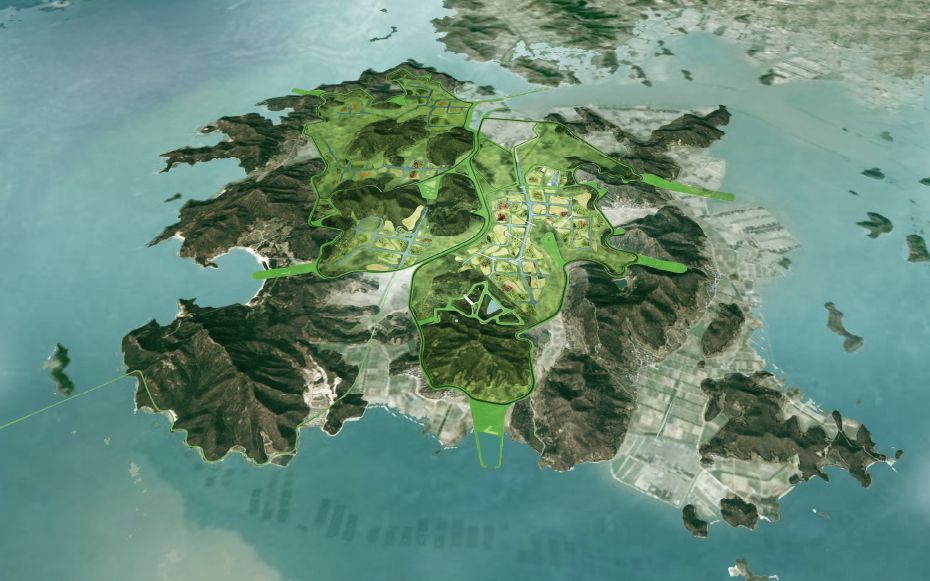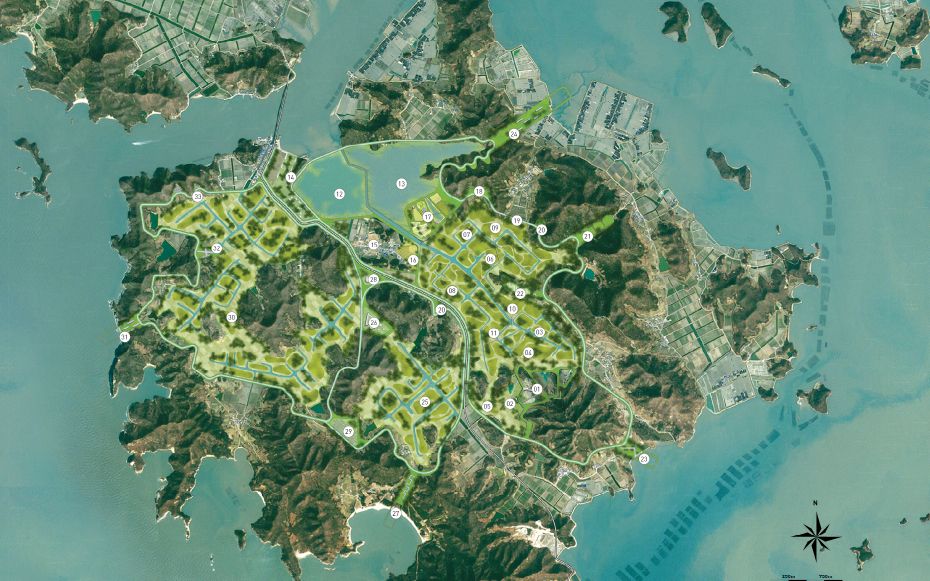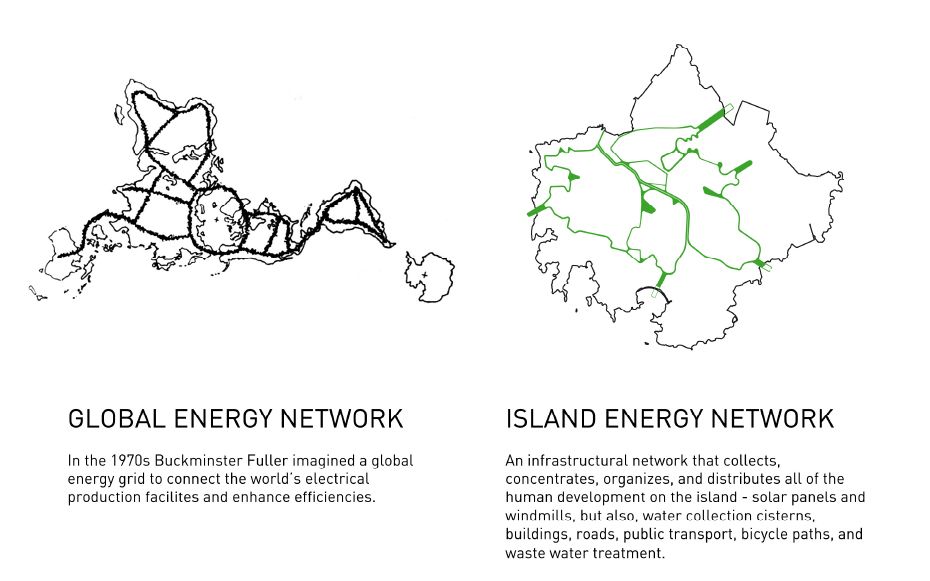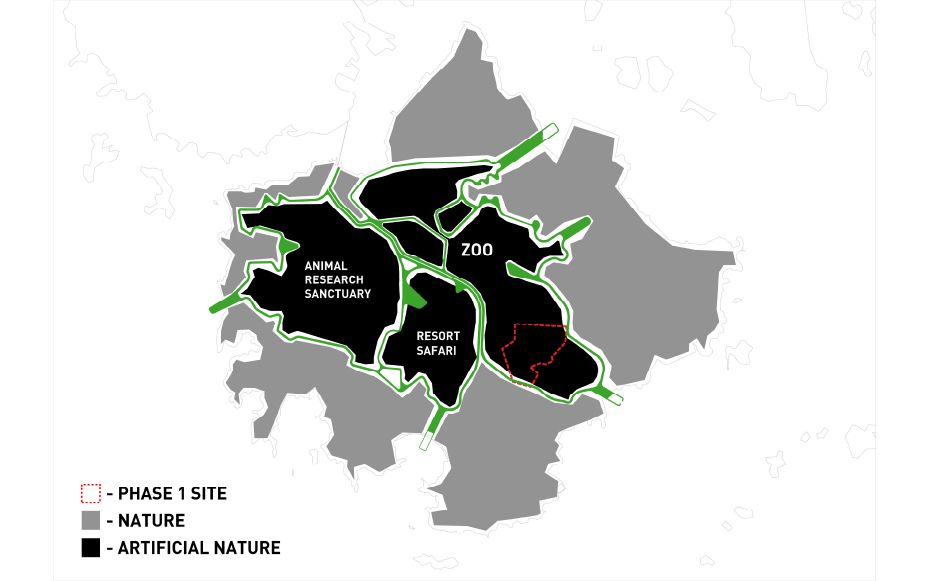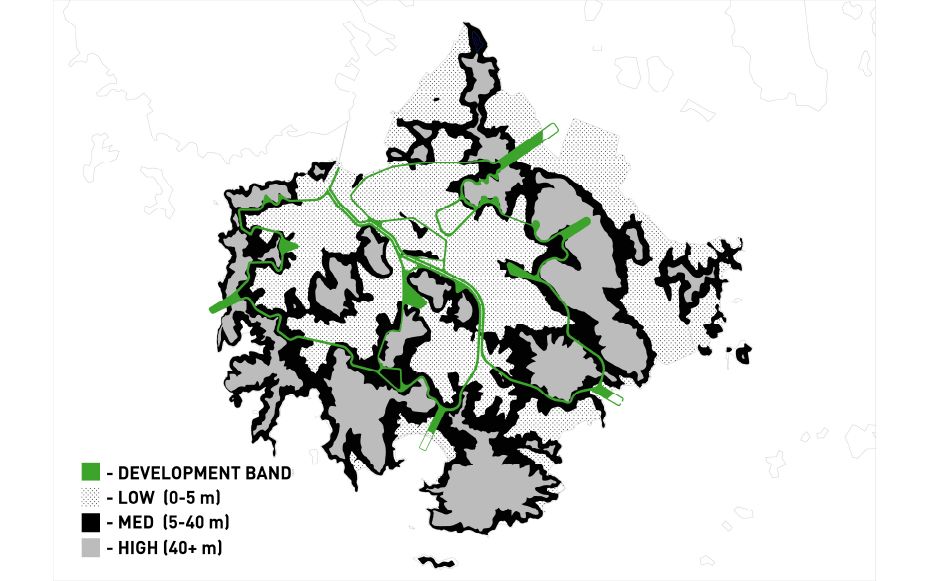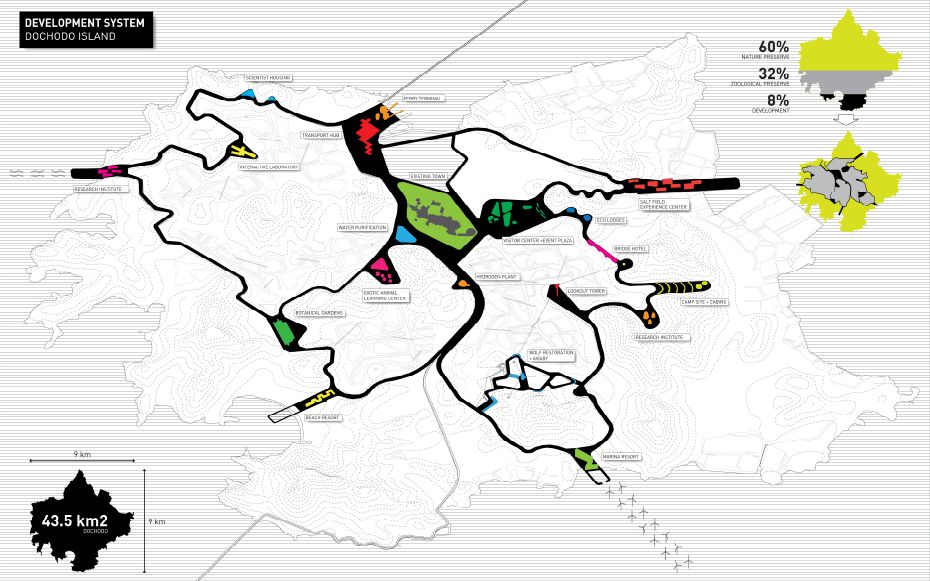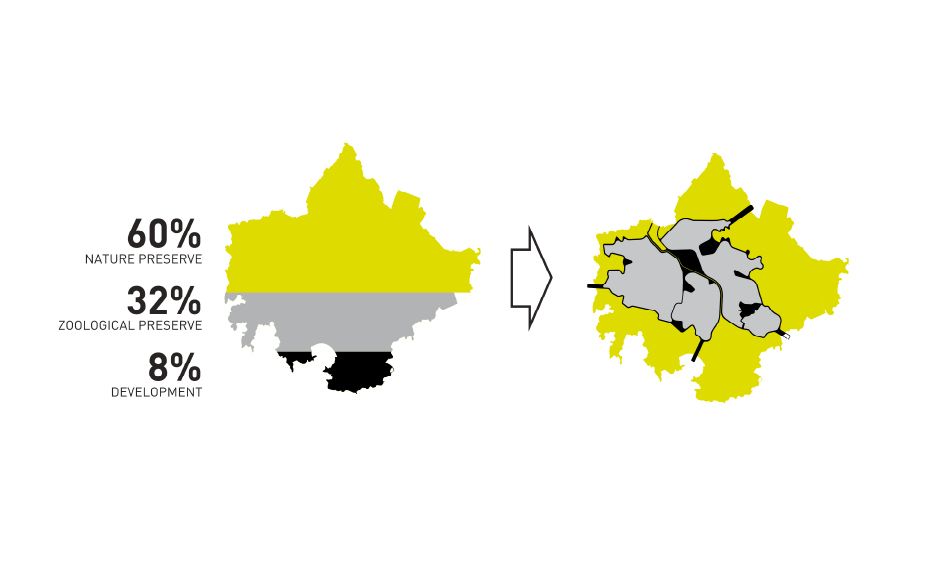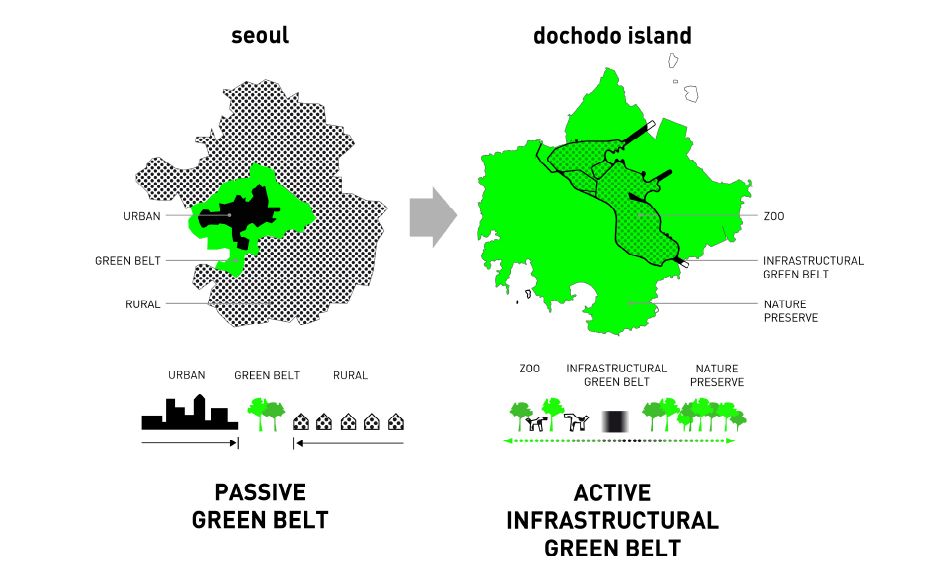Zoo / Dochodo Sustainable Zoological Island
Our proposal for a Zero Energy Zoological Island in South Korea conflates strategies of infrastructural engineering with those of architectural design to more intelligently coordinate the shape of development with the desires for its use. Confronted with the task of developing the undeveloped, the question became how to limit development to an absolute minimum while maximizing its productivity and efficiency.
We looked to the example of the urban green belt, or growth boundary, an urban planning strategy and form of urban infrastructure that has historically served to passively limit development. Rather than simply establish an edge to development, we would empower the green belt to both concentrate development and enhance surrounding ecologies. Transplanted from the city to nature, our green belt acts as sustainable infrastructure, a machine to both enable development along its length and enhance the ecological health of the surrounding natures.
It is a network that collects, organizes, and distributes all of the human development on the island – solar panels, wind turbines, and wave energy converters, but also, buildings, roads, public transport, bicycle paths, water cisterns, and waste treatment. It is architecture as infrastructure. Not infrastructure buried below ground, or infrastructure that accomplishes only a single task.
This is infrastructure that is present and busy, that multi-tasks, and that is itself a space of inhabitation and use. It is designed, it is big, and you could probably see it from outer space. But it is also smart, promotes new efficiencies, and instigates a comprehensive ecology of exchange between architecture, infrastructure, and nature.
Project Info
Architects: JDS
Location: Dochodo Island, South Korea
Project Leader: Heechan Park
Client: Dochodo Island Government
Team: Francisco Villeda, Isabella Eriksson, Robert Huebser, Ryan Neiheiser, Wolfgang Mitterer, Wouter Dons
Year: 2009
Type: Park
Courtesy of JDS
Courtesy of JDS
Courtesy of JDS
Courtesy of JDS
Detail
Courtesy of JDS
Courtesy of JDS
Courtesy of JDS
Courtesy of JDS
Studies
Studies
Studies
Studies
Studies
Studies
Studies
Studies


